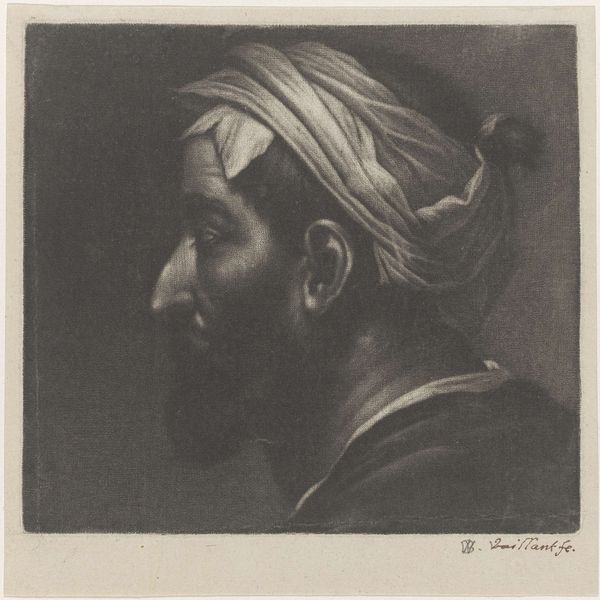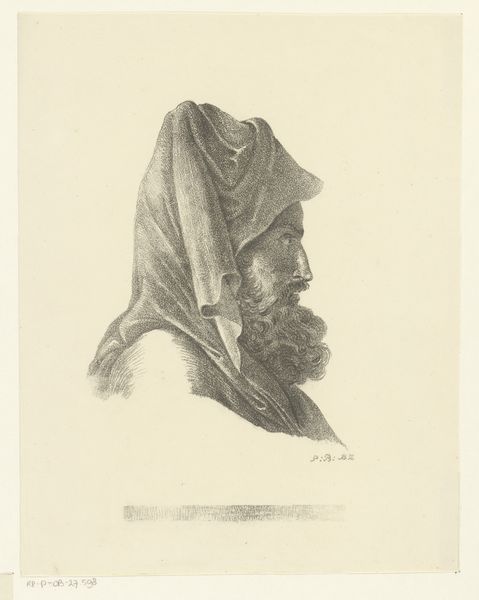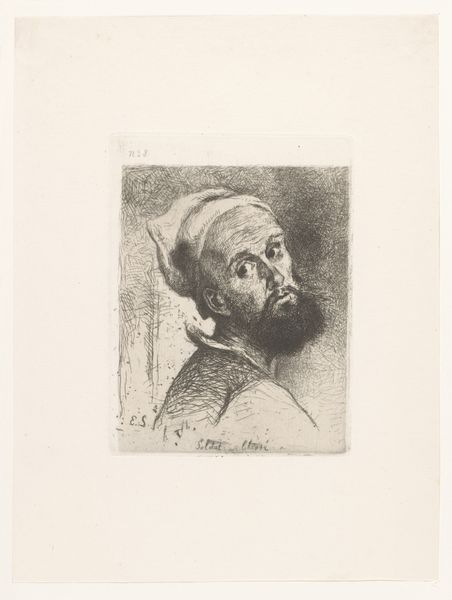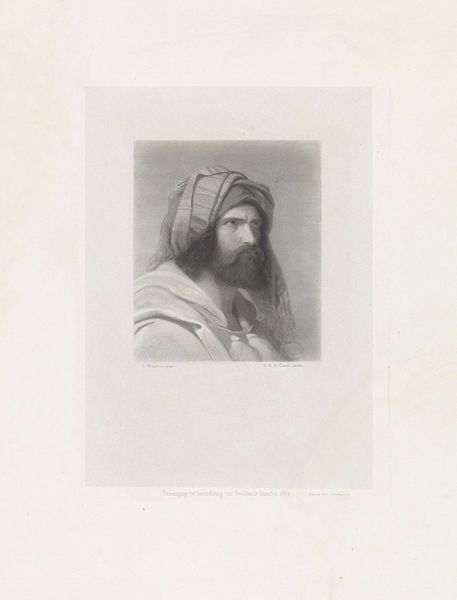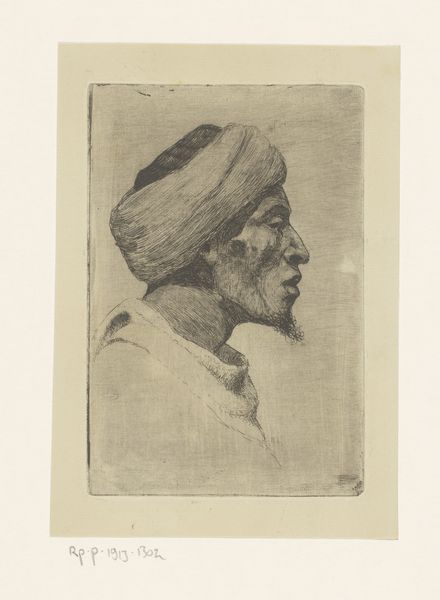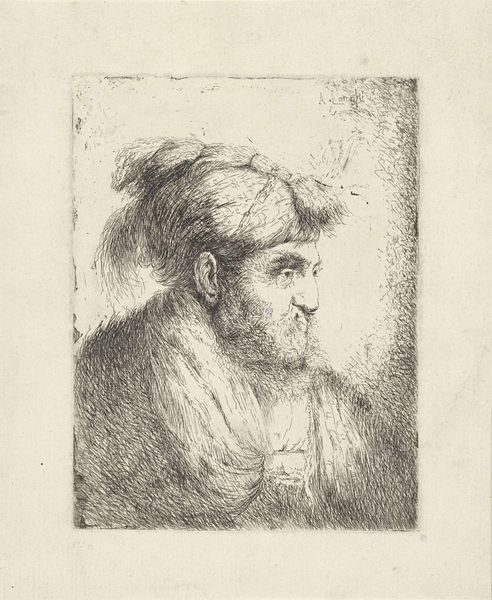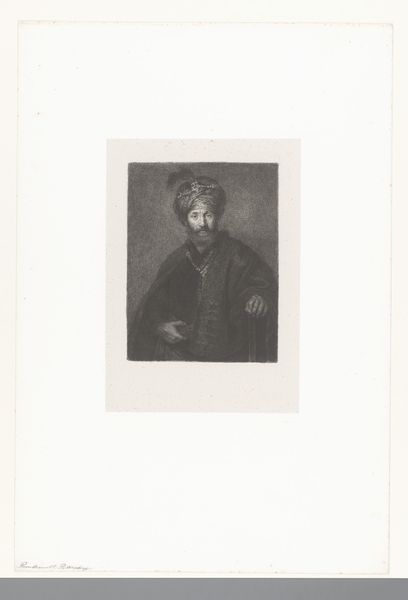
Head of Executioner, from John Evelyn's Sculptura 1755
0:00
0:00
drawing, print, paper, engraving
#
portrait
#
drawing
# print
#
paper
#
engraving
Dimensions: 130 × 163 mm (image/plate); 178 × 178 mm (sheet)
Copyright: Public Domain
Curator: Richard Houston’s 1755 engraving, "Head of Executioner, from John Evelyn's Sculptura," immediately strikes me with its somber and rather contemplative mood, wouldn't you agree? The subject’s gaze, directed away, hints at an internal world we can only speculate about. Editor: Absolutely. There’s a weightiness to the image—the darkness closing in around the face and the intricate folds of his turban contribute to a sense of contained power and, dare I say, reluctant authority. Who are executioners within the social and political discourse? It’s complex. Curator: Indeed, executioners historically occupy a liminal space in society—agents of state power yet simultaneously ostracized and often reviled. Consider how that role intersects with prevailing class structures and access to power at the time. Houston presents this individual as worthy of, perhaps even demanding, a form of dignified regard, don’t you think? Editor: It's a fascinating tension. Notice the specific type of turban and dress; does that have roots in Ottoman iconographies of power? Even the way his beard is shaped evokes certain visual tropes associated with authority. He’s positioned visually, to embody the figure of 'executioner', through symbols the culture immediately associates with 'power', so Houston invites the viewer to decode those associations and assumptions. Curator: I agree. He certainly understood how attire communicates. What's really powerful is how Houston subtly invites empathy. Look at the careful rendering of the facial features, how it steers clear of caricature or demonization, aligning itself to the cultural perception that he could simply be someone just doing a job. This is not to negate the role the executioner plays within systematic state sanctioned murder, but rather, the ability for propaganda to shift popular support depending on presentation. Editor: I hadn’t thought of it in precisely those terms, but it’s true, there's a restraint to the artwork—almost an unsettling neutrality. The composition directs our eyes straight toward that powerful profile. So, whether through this engraving we confront the role this person may play, we are made aware, on some level, that he may carry out a brutal function for a higher, pre-approved goal, that allows state violence to be enacted. Curator: I’m struck by how contemplating "Head of Executioner, from John Evelyn's Sculptura," allows us to consider the function and representation of such complex roles and figures across history and cultures. Editor: It offers, through a seemingly simple portrait, so many avenues into broader historical, cultural, and psychological landscapes. And with its powerful use of visual symbolism, that executioner haunts us even now.
Comments
No comments
Be the first to comment and join the conversation on the ultimate creative platform.


